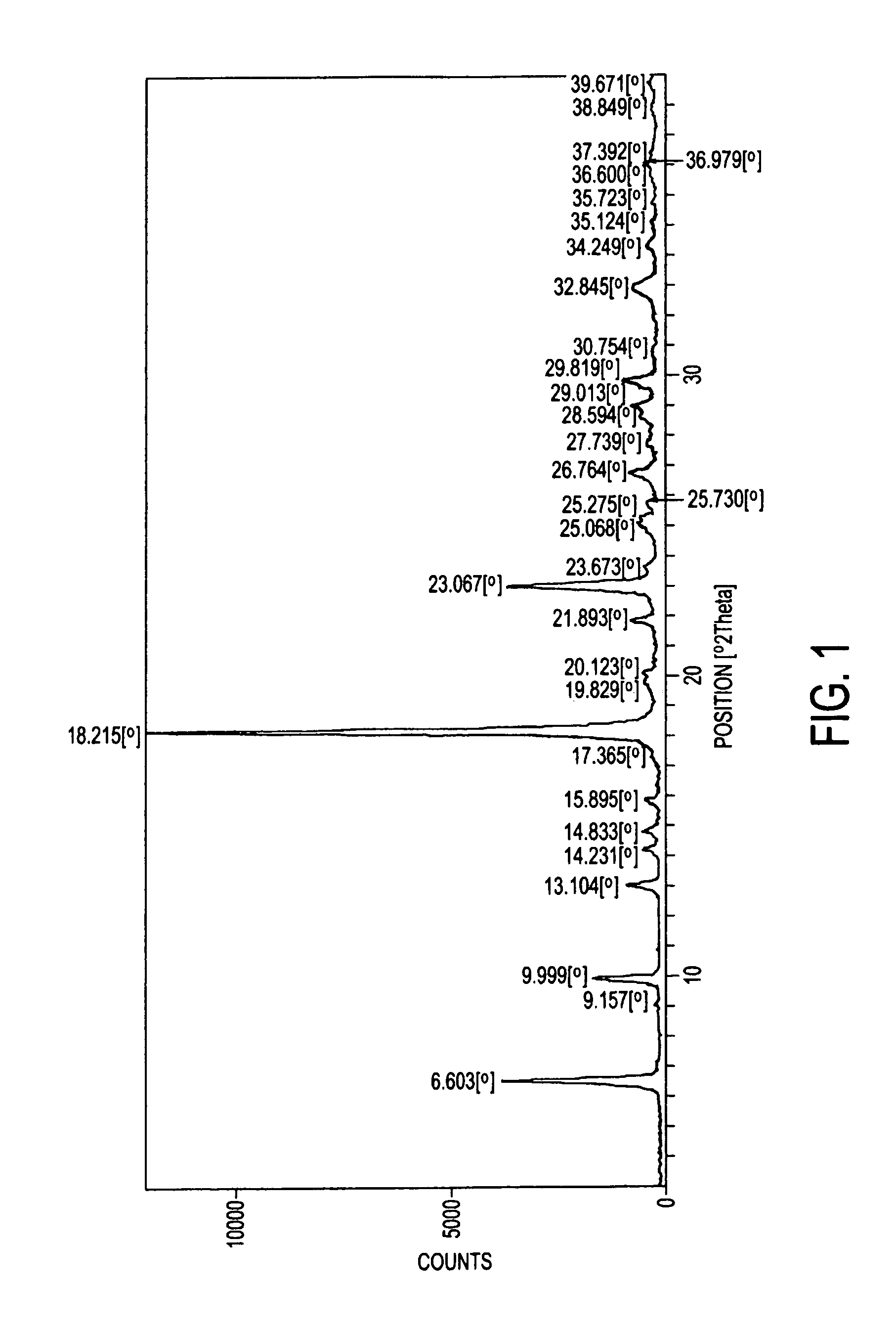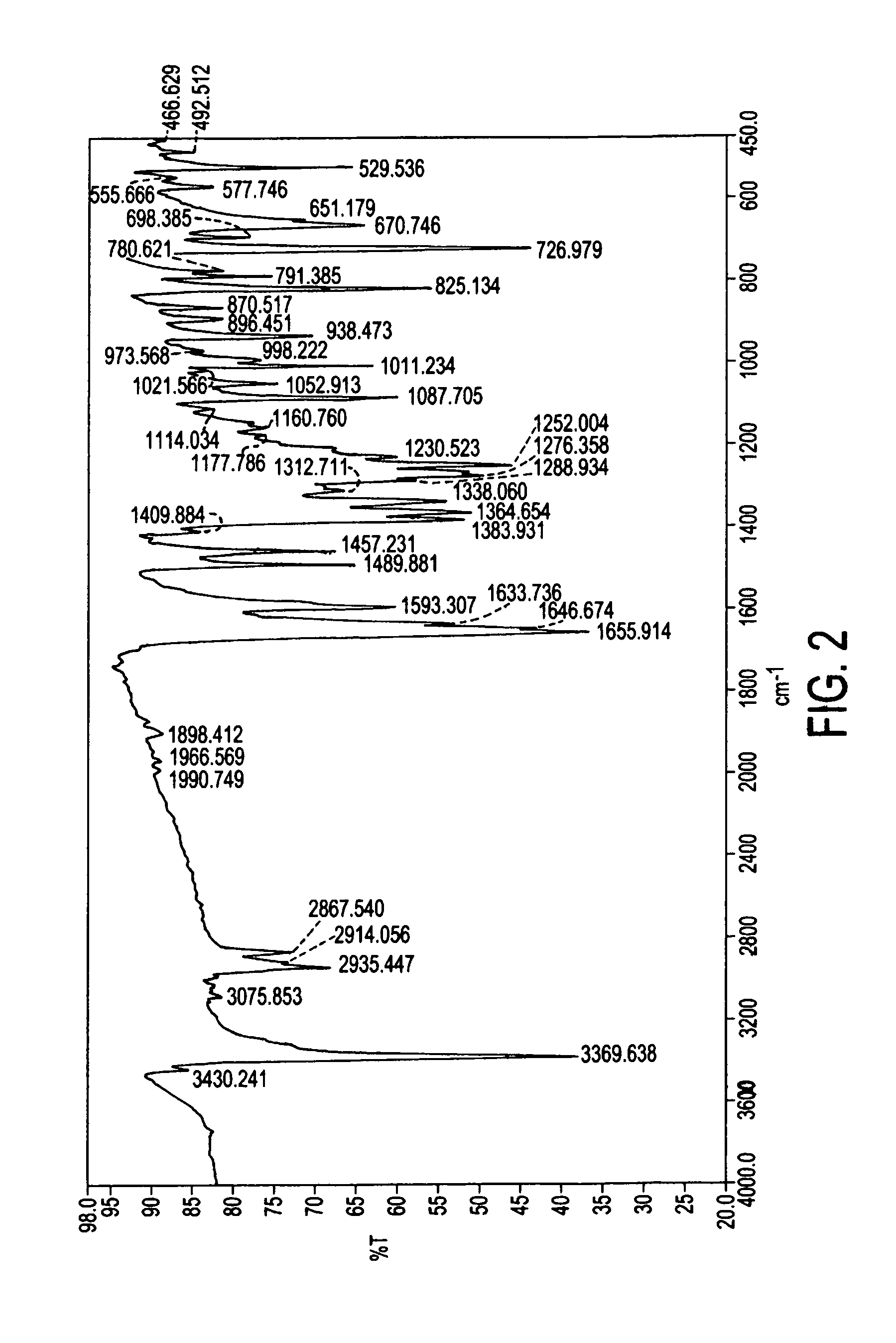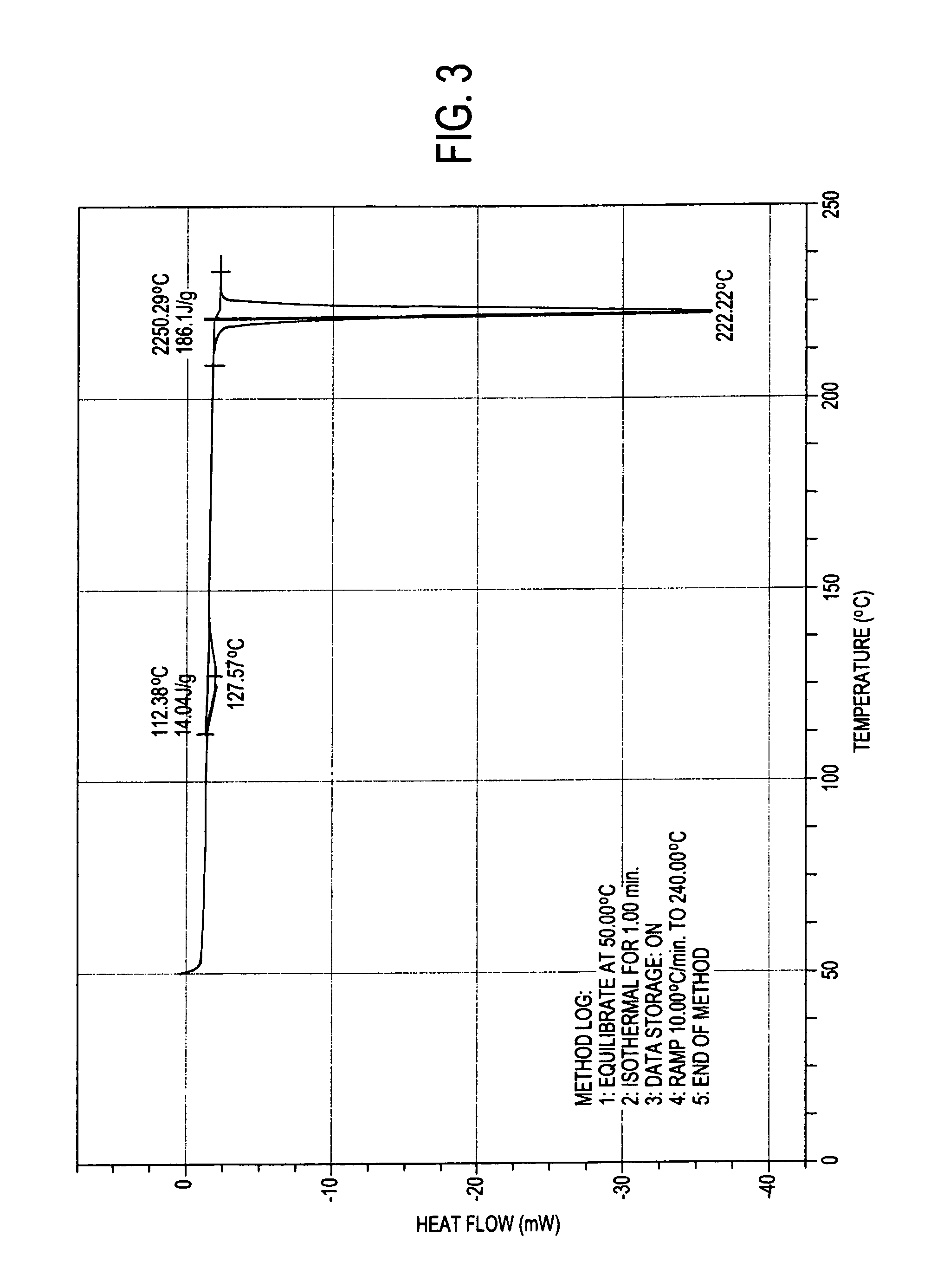Process for preparation of atovaquone and novel intermediates thereof
a technology of atovaquone and novel intermediates, which is applied in the preparation of carbonyl compounds, organic chemistry, chemistry apparatuses and processes, etc., can solve the problems of substantial difficulties in producing atovaquone in a consistent and reliable manner, prior art processes, etc., to achieve better solubility properties, lower bulk density, and high bioavailability
- Summary
- Abstract
- Description
- Claims
- Application Information
AI Technical Summary
Benefits of technology
Problems solved by technology
Method used
Image
Examples
example 1
Preparation of 2-[4-(4-chlorophenyl)cyclohexyl]-1,4-naphthoquinone (Formula II)
[0064]To a stirred solution of silver nitrate (17.5 g, 0.104 moles) dissolved in 100 ml water, 50 g (0.209 moles) trans-4-(4-chlorophenyl)cyclohexane carboxylic acid was added. To this solution acetonitrile (250 ml) was added and under stirring and heated to reflux. 33.1 g (0.209 moles) 1,4-naphthoquinone was then added. 120 g (0.525 mole) ammonium persulfate dissolved in 400 ml water was added drop-wise to the stirred solution and continued reflux for 2 hours. The reaction solution was then cooled to 0-5° C. and extracted with methylene chloride. The organic layer was first washed with water, followed by 10% sodium carbonate aqueous solution, and further with water until the pH is neutral. The organic layer was distilled to eliminate methylene chloride and was then stirred in acetonitrile and filtered. The solid obtained was crystallized from acetonitrile to obtain 15 g of trans-2-[4-(4-chlorophenyl)cycl...
example 2
Preparation of 2-[4-(4-chlorophenyl)cyclohexyl]-2,3-dichloro-2,3-dihydro-1,4-naphthoquinone (Formula III)
[0065]10 g of the compound of Formula II (2-[4-(4-chlorophenyl)cyclohexyl]-1,4-naphthoquinone) as obtained in Example 1 was added to 50 ml glacial acetic acid. Chlorine gas was passed into this solution at about 20° C. The reaction mass was then quenched in water and filtered. The product was dried at 30° C. to obtain 11.5 g of the compound of formula III (95% yield) of the compound of Formula III. 1H NMR (400 MHz), δH (d6-CDCl3) 8.13 (2H, m, Naphth), 7.82-7.89 (2H, m, Naphth), 7.0-7.30 (4H, m, arom.), 4.90-5.0 (1H), 2.67 (1H, tt, CH), 2.49 (1H, m, CH—), 1.2-2.0 (8H, multi, CH2)
example 3
Preparation of trans-2-[4-(4-chlorophenyl)cyclohexyl]-3-chloro-1,4-naphthoquinone (trans-Formula IV)
[0066]10 g of 2-[4-(4-chlorophenyl)cyclohexyl]-2,3-dichloro-2,3-dihydro-1,4-naphthoquinone (Formula III) obtained in example 2 was suspended in glacial acetic acid (80 ml). 2.9 g of anhydrous sodium acetate was added to the mixture and heated to reflux for 1 hour and then cooled. Water was then added to the mixture. The precipitated product was filtered of and recrystallized from acetonitrile to obtain 6.5 g (70% yield) of the trans isomer of the compound of Formula IV.
PUM
| Property | Measurement | Unit |
|---|---|---|
| voltage | aaaaa | aaaaa |
| temperature | aaaaa | aaaaa |
| temperature | aaaaa | aaaaa |
Abstract
Description
Claims
Application Information
 Login to View More
Login to View More - R&D
- Intellectual Property
- Life Sciences
- Materials
- Tech Scout
- Unparalleled Data Quality
- Higher Quality Content
- 60% Fewer Hallucinations
Browse by: Latest US Patents, China's latest patents, Technical Efficacy Thesaurus, Application Domain, Technology Topic, Popular Technical Reports.
© 2025 PatSnap. All rights reserved.Legal|Privacy policy|Modern Slavery Act Transparency Statement|Sitemap|About US| Contact US: help@patsnap.com



